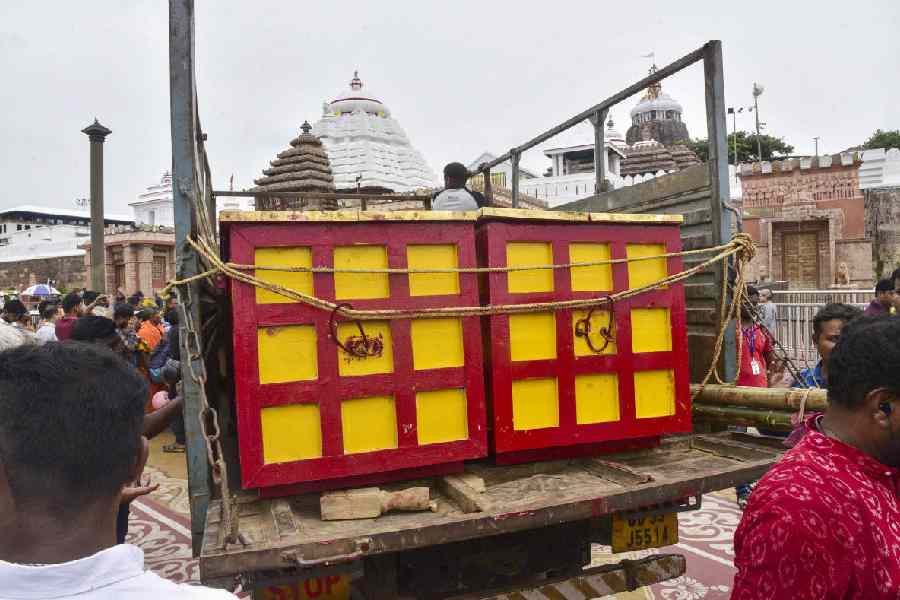The expert team of the Archaeological Survey of India (ASI) on Sunday completed the technical survey of the Ratna Bhandar, the treasure trove of
the 12th-century Jagannath Temple.
The survey had begun on Saturday.
The team, comprising members of the Council of Scientific and Industrial Research (CSIR) and the National Geophysical Research Institute (NGRI), Hyderabad, executed laser scanning and physical verification of the Ratna Bhandar. The survey continued from 2pm to 6pm.
They used high-tech gadgets to conduct a detailed assessment of the outer and inner chambers of the Ratna Bhandar. The team will undertake a ground-penetrating survey, which will help in the conservation and repair of the Ratna Bhandar. The ground-penetrating survey will also find out whether there exists any hidden chamber inside the Ratna Bhandar. So far, the team has maintained that no such tunnel exit exists in the temple.
Arabinda Kumar Padhee, the chief administrator of the Shree Jagannath Temple Administration (SJTA), had earlier urged the director-general of the ASI to initiate the scanning and geophysical investigation using the latest technology, conservation, repair and restoration of the inner and outer chambers of the Ratna Bhandar.
Chairman of the Ratna Bhandar inventory committee, Justice Biswanath Rath, said: “We are sure the survey work will be completed within the stipulated time frame.”
The Ratna Bhandar comprises mainly two chambers (inner and outer) and stores the jewels and ornaments of the three deities. In the outer chamber, ornaments are kept for the daily use of the deities. The ornaments stored in the inner chamber are never used in the rituals of the deities. The last time the inventory of the valuables in the Ratna Bhandar was made was in 1978. The outer chamber was opened in 2018 but officials could not enter the inner chamber as the keys could not be located.
The administration opened the chamber in July and shifted the jewellery from Ratna Bhandar to a safer place inside the shrine. Ratna Bhandar’s repair will begin after the survey is completed.











